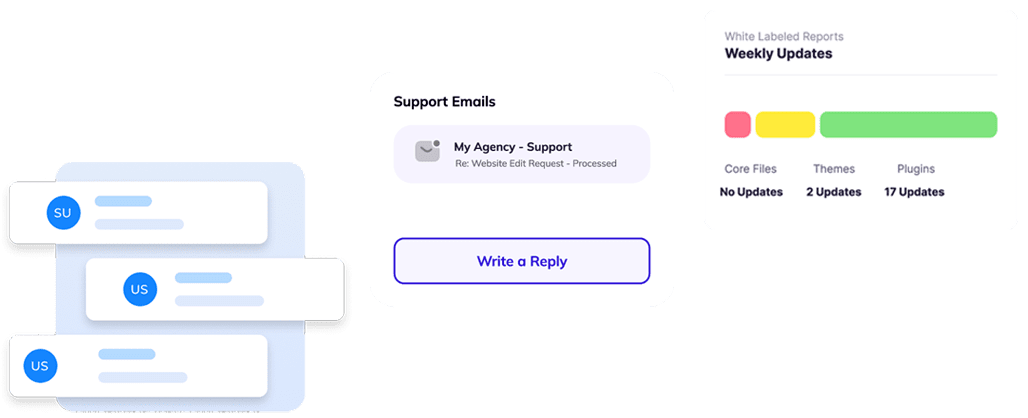Search Engine Optimization, commonly known as SEO, is a crucial aspect of any digital marketing strategy. The process involves optimizing a website’s content and structure to improve its visibility and ranking on search engines like Google, Bing, and Yahoo.
In today’s fast-paced digital world, online search is often the first step for potential customers looking for a product or service. As such, it’s crucial for businesses to rank high on search engine results pages (SERPs). SEO helps businesses achieve this goal by making their websites more visible and accessible to their target audience.
SEO involves a combination of techniques and strategies that are designed to improve a website’s ranking on search engines. Some of the key elements of SEO include:
- Keyword research: This involves researching the keywords that potential customers are using to find products or services in your industry. By identifying these keywords, you can create content that is relevant to your audience and more likely to appear in search results.
- On-page optimization: This involves optimizing the website’s content, structure, and HTML code to make it more accessible and understandable to search engines. It includes optimizing meta tags, headings, images, and other elements that search engines use to understand the content of a webpage.
- Link building: This involves creating backlinks to your website from other high-quality websites in your industry. These backlinks serve as a vote of confidence for your website and help to improve your search engine ranking.
- Technical SEO: This involves optimizing the website’s technical structure, such as its loading speed, mobile responsiveness, and URL structure. Technical SEO is important because it helps search engines understand the website’s structure and content more easily.
SEO can be a complex and time-consuming process, but it’s essential for businesses looking to improve their online presence. By investing in SEO, businesses can attract more traffic to their website, generate more leads and conversions, and ultimately, increase revenue.
It’s worth noting that SEO is an ongoing process that requires constant monitoring, adjustment, and improvement. Search engines are constantly updating their algorithms, and new competitors are entering the market, making it essential to stay up to date on the latest SEO trends and techniques.
Moreover, SEO is not a one-size-fits-all solution. The strategies and techniques that work for one business may not be effective for another. As such, it’s essential to develop a customized SEO strategy that takes into account the unique needs and goals of your business.
SEO is not a quick fix, and it requires a significant investment of time, effort, and resources. However, the benefits of SEO can be significant, and the return on investment (ROI) can be substantial. By ranking high on search engine results pages, businesses can attract more traffic, generate more leads and conversions, and ultimately, increase revenue.
In today’s digital world, SEO is no longer an optional marketing strategy but a crucial element of any successful online business. By investing in SEO, businesses can stay ahead of the competition, increase their visibility, and achieve greater success in their online endeavours.
Technical SEO
Technical SEO is another critical aspect of SEO that businesses must consider to improve their search engine rankings. Technical SEO involves optimizing a website’s technical elements to improve its performance, speed, and user experience. Technical SEO can have a significant impact on a website’s search engine rankings and can help businesses stay competitive in their industry.
Some key elements of technical SEO include optimizing a website’s site structure, improving website speed and performance, implementing schema markup, ensuring mobile responsiveness, and optimizing website URLs. By optimizing these technical elements, businesses can improve their website’s crawlability, indexability, and usability, which can improve its search engine rankings.
One critical element of technical SEO is website speed and performance. A website’s speed and performance can impact its user experience and search engine rankings. Search engines prioritize websites that load quickly and provide a positive user experience. Therefore, businesses must optimize their website’s speed and performance by minimizing page load times, optimizing images and videos, and compressing files.
Another essential element of technical SEO is implementing schema markup. Schema markup is a type of microdata that provides search engines with additional information about a website’s content. By implementing schema markup, businesses can improve their website’s relevance and visibility in search engine results pages.
Keyword Research
Keyword research is a fundamental aspect of SEO that businesses must consider to improve their search engine rankings. Keyword research involves identifying the keywords and phrases that potential customers are using to search for products or services in a particular industry. By optimizing a website’s content around these keywords and phrases, businesses can improve their website’s relevance and visibility in search engine results pages.
To conduct keyword research, businesses must use tools that can help them identify the keywords and phrases that potential customers are using. There are several tools available, including Google’s Keyword Planner, SEMrush, and Ahrefs, among others. These tools can provide businesses with valuable insights into the search volume and competition for specific keywords and phrases.
Once businesses have identified the keywords and phrases that potential customers are using, they must optimize their website’s content around those keywords. This optimization involves including relevant keywords in the website’s meta tags, headlines, and body content. However, businesses must avoid keyword stuffing, which involves overusing keywords to manipulate search engine rankings. Keyword stuffing can harm a website’s relevance and reputation and result in a penalty from search engines.
In addition to optimizing website content, businesses must also consider the intent behind the keywords and phrases that potential customers are using. For example, a customer searching for “best restaurants in Chennai” may have a different intent than a customer searching for “Italian restaurants” By understanding the intent behind the keywords and phrases that potential customers are using, businesses can create more targeted and effective content that improves their search engine rankings.
Link Building
Link building is one of the most important aspects of off-site optimization and can have a significant impact on a website’s search engine rankings. Link building involves acquiring backlinks from external websites that point to a business’s website. Backlinks can signal to search engines that a website is reputable, credible, and trustworthy, and can increase its authority and relevance.
However, not all backlinks are created equal. Search engines prioritize high-quality backlinks from reputable and relevant websites. Backlinks from low-quality or spammy websites can harm a website’s reputation and search engine rankings. Therefore, businesses must prioritize acquiring high-quality backlinks from reputable and relevant websites in their link building strategy.
There are many different strategies that businesses can use to acquire backlinks. One effective strategy is to create high-quality content that other websites want to link to. By creating valuable and engaging content, businesses can attract backlinks from other websites that find the content valuable and informative.
Another effective strategy is to reach out to other websites and request backlinks. This strategy requires businesses to identify relevant and authoritative websites in their industry and reach out to them with a well-crafted outreach email. The email should highlight the value of the content on the business’s website and explain why a backlink would be beneficial to the website owner.
While link building can be an effective strategy for improving a website’s search engine rankings, it requires a significant investment of time and effort. Businesses must prioritize acquiring high-quality backlinks from reputable and relevant websites in their link-building strategy to improve their website’s authority and relevance.
SEO and PPC
When it comes to online marketing, Search Engine Optimization (SEO) and Pay-Per-Click (PPC) advertising are two of the most commonly used methods to attract traffic to a website. Both methods can be effective, but they operate differently and offer different advantages and disadvantages.
SEO is a long-term strategy that involves optimizing a website’s content, structure, and technical elements to improve its ranking in organic search results. Organic search results are the listings on a search engine results page that are not paid for, but rather determined by relevance and authority.
PPC, on the other hand, is a paid advertising model that involves placing ads on search engine results pages, social media, or other websites. With PPC, advertisers pay a fee each time someone clicks on their ad, hence the name Pay-Per-Click.
One of the key advantages of SEO is that it can provide long-term benefits. With SEO, businesses can generate organic traffic and achieve higher rankings in search engine results pages over time. Organic traffic tends to have a higher conversion rate compared to paid traffic, and SEO is often more cost-effective in the long run.
PPC, on the other hand, can provide more immediate results. With PPC, businesses can target specific audiences with specific keywords, demographics, and behaviors, and see immediate results in the form of increased traffic, leads, and conversions. PPC can also be a useful tool for testing new markets and new products, allowing businesses to gather valuable data and insights into their target audience.
When it comes to deciding between SEO and PPC, there is no one-size-fits-all solution. Both methods can be effective, and the best approach will depend on your business’s specific needs and goals. Some businesses may find that SEO is the best fit for their long-term strategy, while others may prefer PPC for its more immediate results.
In conclusion, SEO and PPC are both effective methods for attracting traffic to a website. While they operate differently and offer different advantages and disadvantages, the best approach will depend on your business’s specific needs and goals. By understanding the differences between SEO and PPC, businesses can make an informed decision and develop a marketing strategy that delivers the best results.
Content Optimization
Another essential aspect of SEO is content optimization. Creating high-quality, relevant, and engaging content is crucial to achieving a high ranking in search engine results pages. By creating content that satisfies user intent, businesses can improve their website’s relevance and authority and attract more traffic to their website.
Content optimization involves several techniques, such as keyword research, on-page optimization, and link building. Keyword research is the process of identifying the most relevant and profitable keywords for a business and optimizing content around those keywords. On-page optimization involves optimizing the content, title tags, meta descriptions, and other on-page elements to improve relevance and readability. Link building is the process of acquiring high-quality backlinks from other websites to improve authority and visibility.
Creating high-quality, relevant, and engaging content is essential to content optimization. Businesses must understand their target audience’s needs, preferences, and pain points and create content that satisfies those needs. Content can take various forms, including blog posts, videos, infographics, eBooks, and whitepapers.
Moreover, businesses must ensure that their content is accessible, easy to read, and mobile-friendly. With the growing number of mobile users, businesses must ensure that their content is optimized for mobile devices to avoid losing potential customers.
Content optimization is a crucial aspect of SEO. By creating high-quality, relevant, and engaging content and optimizing it around specific keywords, businesses can improve their website’s relevance and authority, attract more traffic, and increase conversions. Content optimization involves several techniques, such as keyword research, on-page optimization, and link building, and requires a significant investment of time and effort. However, the benefits of content optimization can be substantial and provide a long-term competitive advantage.
On-site Optimization
On-site optimization is another critical aspect of SEO that businesses must pay attention to. On-site optimization involves optimizing the technical aspects of a website to make it more accessible and user-friendly for both search engines and users. Some essential on-site optimization techniques include optimizing page load times, improving site structure and navigation, and using descriptive URLs and title tags.
One of the essential elements of on-site optimization is optimizing page load times. With the growing number of mobile users, businesses must ensure that their website loads quickly on mobile devices. Slow load times can increase bounce rates and negatively impact the user experience, leading to a drop in rankings and traffic.
Another essential aspect of on-site optimization is improving site structure and navigation. A well-structured website with a clear hierarchy of pages can help both users and search engines find and understand the content on the website. Businesses must ensure that their website is easy to navigate, with clear menus, categories, and subcategories.
Using descriptive URLs and title tags is also essential for on-site optimization. URLs and title tags should accurately reflect the content on the page and include relevant keywords. Descriptive URLs and title tags can help search engines understand the content on the page and improve the website’s relevance and authority.
On-site optimization is a crucial aspect of SEO that businesses must pay attention to. By optimizing the technical aspects of a website, businesses can improve its accessibility, user-friendliness, and relevance, leading to higher rankings and more traffic. On-site optimization techniques include optimizing page load times, improving site structure and navigation, and using descriptive URLs and title tags. While on-site optimization requires a significant investment of time and effort, the benefits can be substantial and provide a competitive advantage in the long run.
Off-site Optimization
Off-site optimization, also known as off-page optimization, is another important aspect of SEO that businesses must consider. Off-site optimization involves improving the website’s visibility and authority through activities that take place outside of the website itself. Some essential off-site optimization techniques include link building, social media marketing, and online reputation management.
Link building is one of the most important off-site optimization techniques. The number and quality of external links that point to a website can significantly impact its authority and relevance. The more high-quality backlinks a website has, the higher its authority and search engine rankings will be. However, businesses must ensure that they acquire backlinks from reputable websites and avoid spammy or low-quality links that can harm their reputation.
Social media marketing is another important off-site optimization technique. Social media platforms provide an excellent opportunity for businesses to reach and engage with their target audience. By creating and sharing high-quality content on social media platforms, businesses can attract more traffic to their website, improve their online reputation, and increase their visibility and authority.
Online reputation management is also essential for off-site optimization. A business’s online reputation can significantly impact its search engine rankings and traffic. Businesses must monitor and manage their online reputation by responding to customer feedback, addressing negative reviews, and promoting positive reviews and testimonials.
In conclusion, off-site optimization is a crucial aspect of SEO that businesses must consider. By improving their website’s visibility and authority through activities that take place outside of the website, businesses can attract more traffic, improve their online reputation, and increase their search engine rankings. Off-site optimization techniques include link building, social media marketing, and online reputation management, and require a significant investment of time and effort. However, the benefits can be substantial and provide a long-term competitive advantage.
Final Thoughts
SEO is an essential component of digital marketing that helps businesses improve their online presence and search engine rankings. By optimizing their website’s content, structure, technical elements, and off-site factors, businesses can attract more organic traffic, generate leads, and increase their revenue. However, SEO is a long-term process that requires consistent effort, monitoring, and optimization. To succeed in SEO, businesses must stay up-to-date with the latest trends, algorithms, and best practices, and continually adapt their strategies to meet their customers’ changing needs. With the right SEO strategy and execution, businesses can improve their online visibility, attract more potential customers, and gain a competitive edge in their industry.













